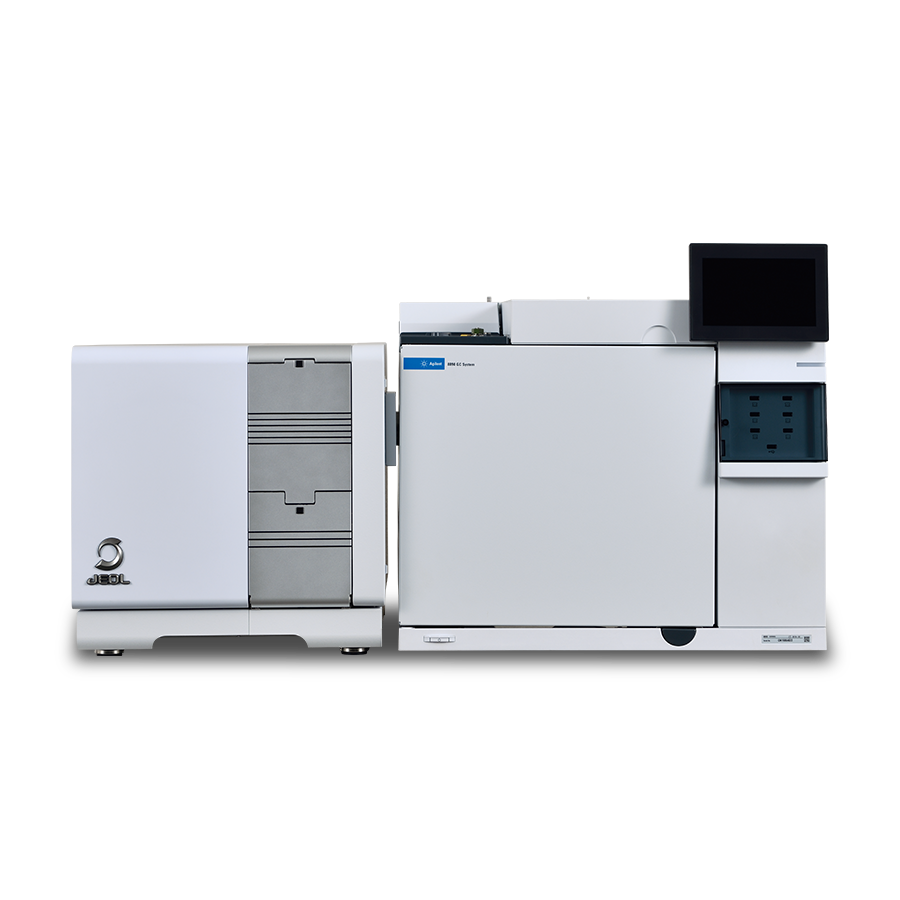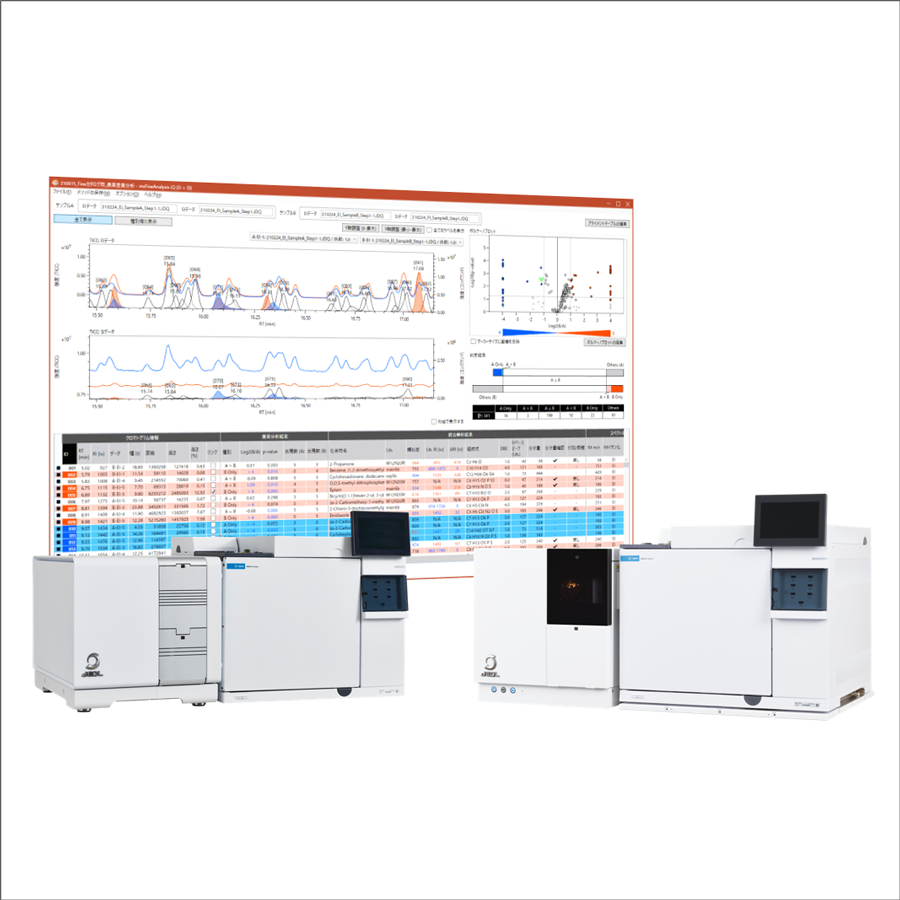Hamburger Aroma Components Analysis Using Microchamber and Thermal Desorption GC-MS
MSTips No. 485
1.Introduction
The microchamber/heated extraction device is used to collect volatile organic compounds from samples heated in the chamber by a sample tube containing adsorbent. Samples can be placed directly into the chamber and a wide range of sample volumes can be set. Thermal Desorption (TD) is a pretreatment device that heats the sample tube and introduces the desorbed gas into the GC. The gas desorbed from the sample tube is trapped in a cooled focusing trap and then desorbed by rapid heating of the focusing trap. The two-stage thermal desorption system provides high analytical sensitivity. These methods are used in a wide range of fields such as food, fibers, plastics and wood products because of their ability to collect volatile compounds efficiently. (MSTips No.435, 436, 459)In this report we show the useful results of the analysis of food aroma compounds using this method.
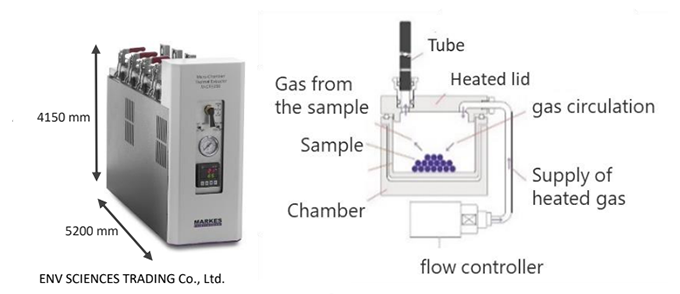
µ-CTE250
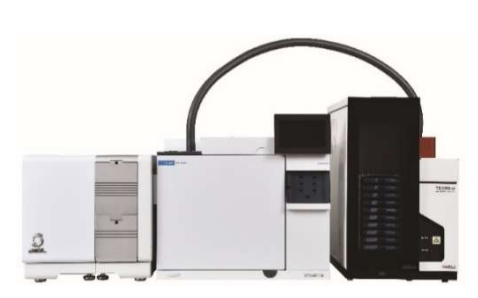
TD-Xr100-JMS-Q1600GC UltraQuad™ SQ-Zeta
2. Experiment
The sampling procedure is shown in Figure 1. A commercial hamburger weighing 7.5 g was used as the sample. The sample including all ingredients (bun, patty, sauces, pickles) was placed in the microchamber (µ-CTE250, MARKES International Ltd.) lined with aluminum foil. The temperature of the chamber was set at 30 ℃, which is assumed to be the temperature at which the food is consumed. The measurement was performed using a GC-MS (JMS-Q1600GC, JEOL Ltd.) attached to a TD pre-treatment device (TD-Xr100, MARKES International Ltd.). The ionization methods used were electron ionization (EI) and photoionization (PI) as soft ionization (SI). The analysis of the obtained data was performed using the software "Integrated Qualitative Analysis1) " (hereafter referred to as msFineAnalysis iQ) from JEOL Ltd. The measurement conditions are shown in Table 1.
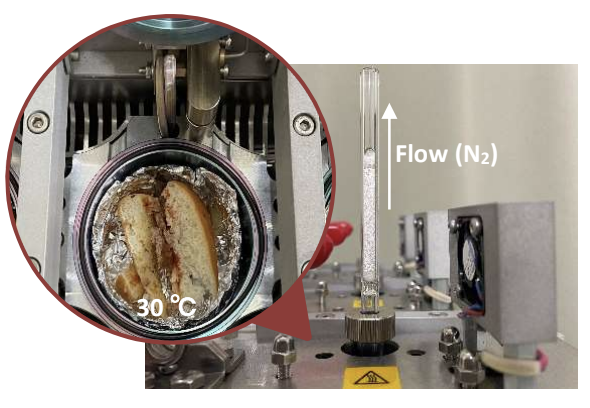
Fig.1 Sampling process
Table 1 Measurement Conditions
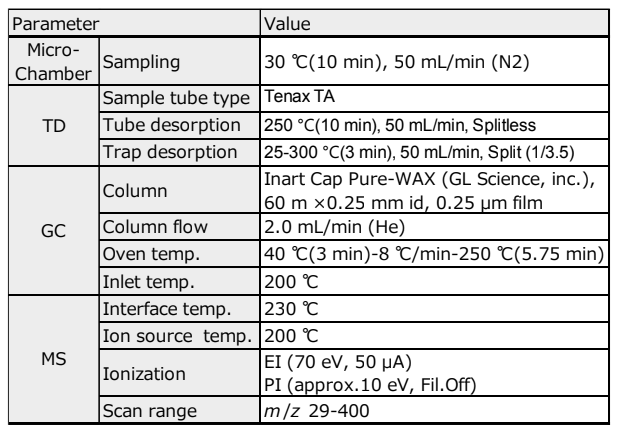
3. Results
3.1 TICC and Deconvolution peaks
The TICC and deconvolution peaks from the TD-GC-MS measurement are shown in Fig. 2. The deconvolution detection function of msFineAnalysis iQ can identify multiple components in a peak that appears to be a single component, as well as small amounts of components that cannot be detected in the TICC. This function detected 50 peaks (ID:[001]-[050]) in the measurement results.
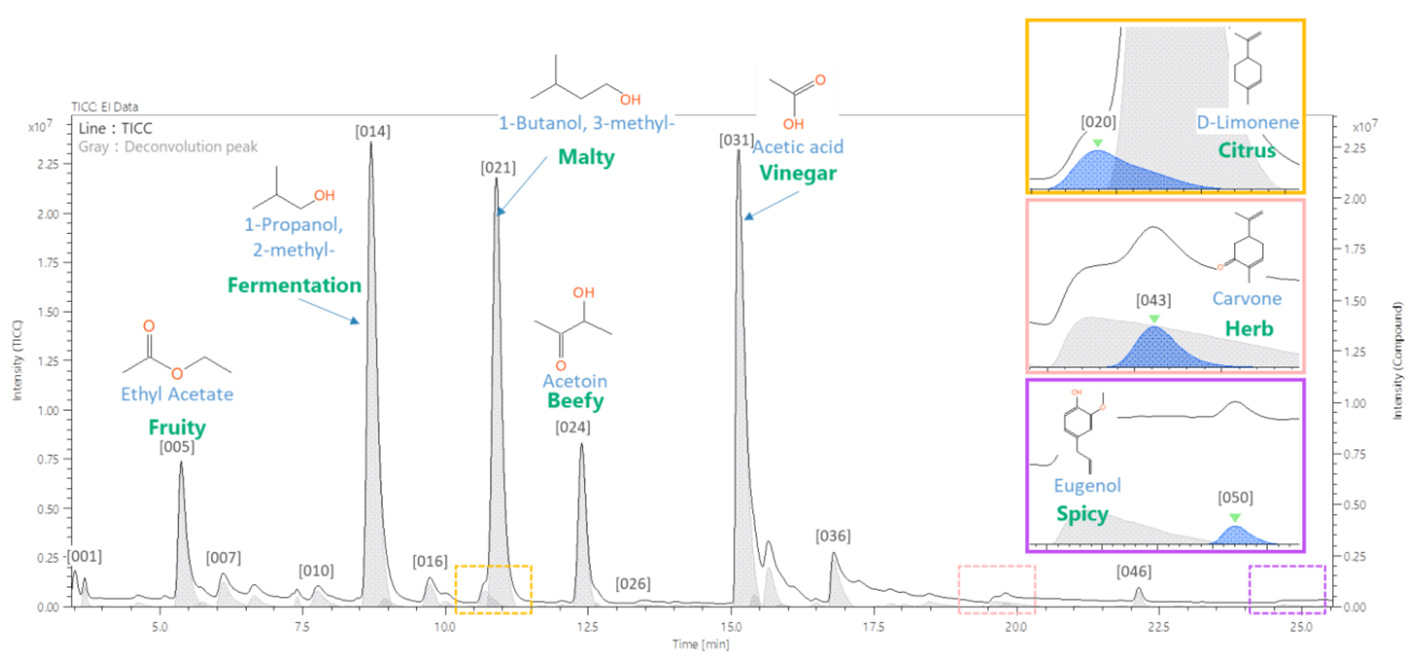
Fig.2 TIC chromatogram and Deconvolution peaks
The main aroma compounds detected were acetic acid from vinegar (sauces, pickles), Acetoin from beef (patties) and 1-Butanol, 3-methyl from malt (buns). In addition, aroma compounds such as D-Limonene, Carvone and Eugenol were detected from citrus fruits, herbs and spices.
3.2 Results of msFineAnalysis iQ
The msFineAnalysis iQ" provides high quality results through integrated qualitative analysis using identification functions such as confirmation of molecular ions in EI and PI data, retention index (RI) and isotope ratio matching in addition to database searching of EI data. In addition, the background color of the table indicates the accuracy of the results, with blue indicating a highly accurate result. As a result, several aroma components suspected to be from hamburger were confirmed with high accuracy.
Table 2 msFineAnalysis iQ results
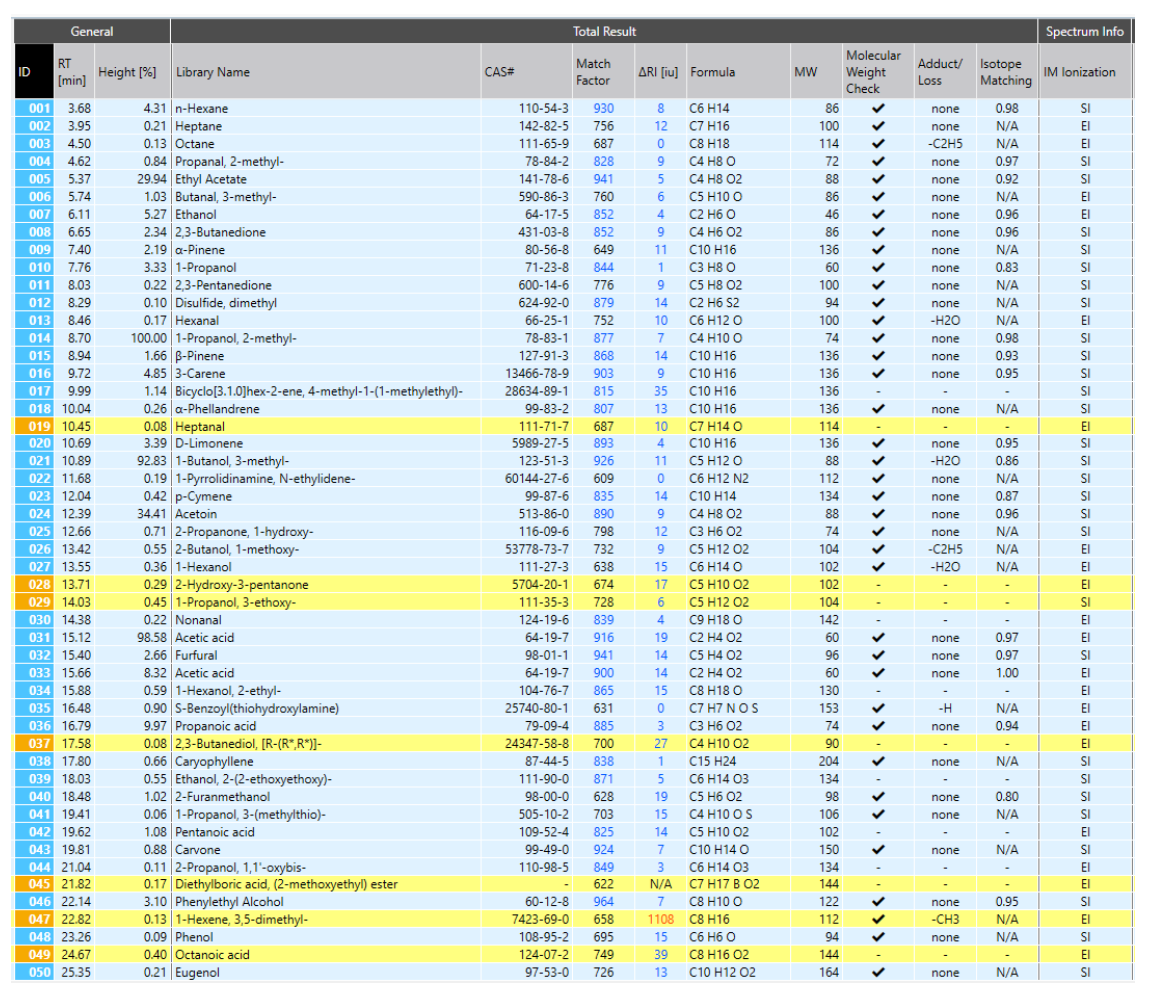
Conclusion
We analyzed the aroma compounds in hamburger using microchamber and TD-GC-MS. As a result, several aroma compounds were identified from the hamburger, demonstrating the usefulness of this method for food aroma analysis.
References
1) M. Ubukata et al, Rapid Commun Mass Spectrum., 34 (2020). DOI: 10.1002/rcm.8820
Solutions by field
Related products
Related information
Analysis of volatile organic compounds inside a vehicle using thermal desorption-GC-MS
Analysis of additives in polypropylene products using thermal desorption-GC-MS
Analysis of terpenes in dried wood using thermal desorption-GC-TOFMS
Are you a medical professional or personnel engaged in medical care?
No
Please be reminded that these pages are not intended to provide the general public with information about the products.

